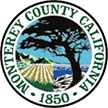Cal Interpreting & Translations (CIT) offers Apache interpreters and translators with legal, medical and specialty experience, including criminal and civil matters, employee meetings, engineering, patent cases, labor disputes, immigration and more.
Although based in Los Angeles, CIT offers comprehensive Apache language services including interpretation, translation and transcription, 24 hours a day, 7 days a week, worldwide. Our interpreters and translators are native speakers who have been screened, certified, have provided credentials, field tested, and kept up to date with developments in both English and the Apache language through means such as lectures, conferences, and travel. CIT’s Apache language interpreters and translators possess in depth knowledge of the Apache language, as well as of the culture and history of the Apache people, allowing them to provide informed and complete interpretation and translation.
The Apache language is derived from the Apache tribe of Native America, associated with the Navajo of the desert areas of southwestern United States (primarily Texas, New Mexico and Arizona) and the northwestern region of Mexico. The ancestors of the Apache and Navajo tribes migrated from Canada and eastern Alaska, as this was their original homeland. These tribes migrated mainly down the Great Plains to the east of the Rocky Mountains. Some evidence suggests that there may have been migration through the Great Basin as well. The Tewa and Zuñi called these migrants Apachu, which means strangers or enemies. These strangers learned agriculture from local tribes and were called, the Apaches de la Nabahu, the Apaches of the Cultivated Fields by the Spanish. These were eventually shortened to the name Navajos. Navajos were the Apaches who adopted farming and sheep herding. The Apaches and Navajos called themselves Na Dene, which means The People.
It did not take long for linguists to realize there is a stark familiarity between the Apache-Navajo languages and that of the Athabascan (Athapascan) languages from northwest Canada and eastern Alaska. There were several similarities in grammatical structure along with vocabulary. There is one particular example, which looks at the word “boat.” For many generations, neither the Apache nor the Navajo tribes had seen a boat but the same word that the Athabascans had used for 'boat' was what the Apache-Navajos had used to describe an owl’s flight, gliding in the air. It was understood by linguists that the Athabascan language was known as “archaic” for the Apache-Navajo people.


No matter what your needs may be, we can and are ready to assist you now. We have translators and interpreters standing by 24/7.

CIT's interpreter is such a rockstar, and it’s so great to have him as a lead interpreter for our Board meetings. About Our Interpreters 
Thank you for always being able to handle emergency interpreting assignments with ease. About Urgent Requests 
Thank you for always being able to handle emergency interpreting assignments with ease. About Urgent Requests 
Your translation rates are more competitive than other language service providers I used in the past. About Pricing 

Professionalism matters at CIT. We respond to request inside 24 hours.







